Editor’s note: This post was created as part of an arms-length collaboration with Indigenous Tourism BC.
— Kim Gray
The recent visit to Western Canada by the Duke and Duchess of Cambridge prompted one spectacular display of aboriginal culture after another.
Their highly publicized appearance meant that a world-wide audience, thanks to every manner of media imaginable, was captivated as the couple made their rounds: receiving an official greeting in Victoria by the Songhees First Nation (whose traditional territory includes the southern tip of Vancouver Island), getting wrapped in gifts of traditional blankets from the Great Bear Rainforest’s Heiltsuk Nation and paddling a war canoe with members of the Haida Nation off Canada’s remote northwest coast.
“By coming here, Will and Kate made it possible for the rest of the world to hear the words ‘Haida Gwaii’ and wonder ‘Where is that?'” says Joelle Rabu, general manager of the Haida House at Tllal—a lodge and tourism facility run by the Council of Haida Nations.
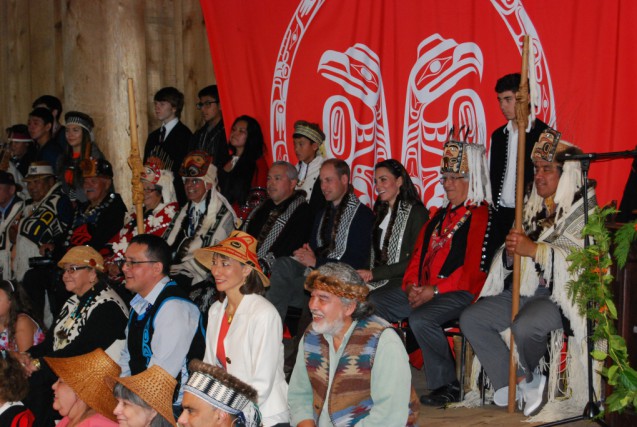
Hereditary leaders join Duke and Duchess of Cambridge in a witnessing ceremony / Photo: Haida Nation
“Now that the royals have come and gone, we invite the world to visit—to walk among our old-growth forests and along our beaches and experience the Haida Nation’s living culture at the Haida Heritage Centre at Kay Llnagaay,” says Rabu, who also encourages visitors to try indigenous cuisine, go salmon fishing, and explore ancient villages like the mystical UNESCO World Heritage Site SGang Gwaay.
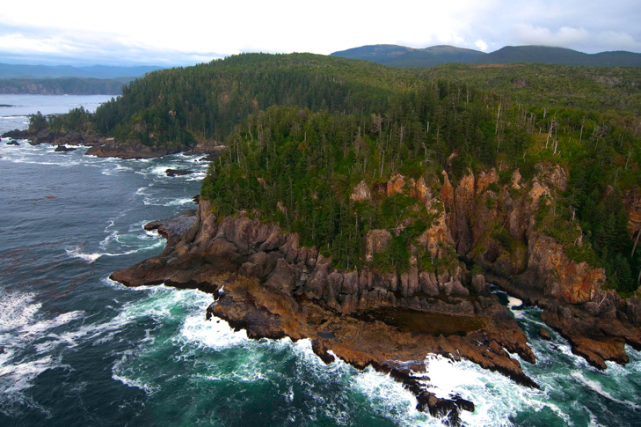
Haida Gwaii is often referred to as the Galapagos of the North / Photo: Haida House
Jisang Nika Collison, curator at the Haida Gwaii Museum—known as “Saahlinda Naay” which means “Saving Things House”—says she appreciates Will and Kate’s interest in the environment, First Nations and physical and mental health.
“Haida art and culture are expressions of our inextricable link to the healthy lands and waters of Haida Gwaii. We face a constant threat of losing that. It can be a daily stress thinking about it,” says Collison, referring to the recent approval for a liquified natural gas project on the West Coast that has many First Nations communities concerned.
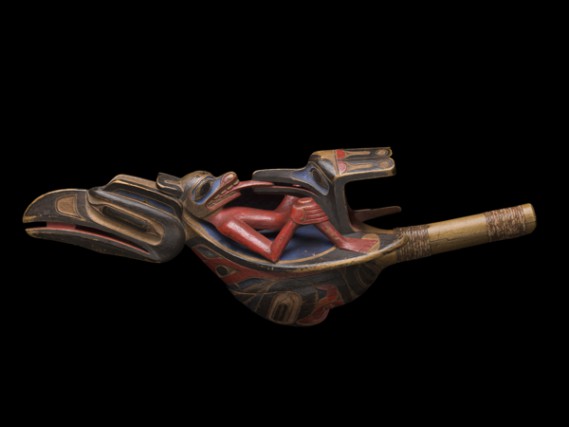
Raven Rattle / Photo by Trevor Mills courtesy “Saahlinda Naay” (Saving Things House) or Haida Gwaii Museum
“This is an issue the entire world faces,” she explains further. “Indigenous people are the canaries in the coal mine. We are aware of what’s happening to the land, physically and spiritually.” Collison, like many in her community, sees sustainable eco and cultural tourism as a way to strengthen the local economy in a less impactful way than resource extraction, overfishing and trophy hunting.
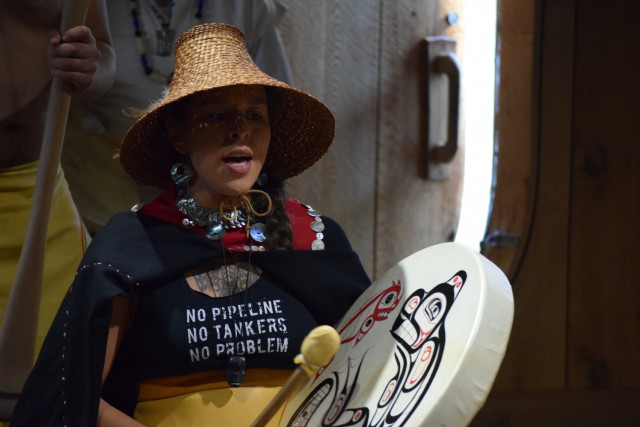
A member of the Haida Nation drums in honour of her ancestors and royal guests / Photo: Haida Nation
During their time with the Heiltsuk Nation in Bella Bella, the royals recognized the Great Bear Rainforest as part of The Queen’s Commonwealth Canopy.
“The establishment of the canopy is a loud and unambiguous statement…that nature is fundamental to the health of our societies,” Prince William announced, adding that indigenous people, wildlife and tourism are direct beneficiaries of the initiative.
“When we protect our rivers, oceans, atmospheres and forests, we are telling our children that our future prosperity cannot be disconnected from the health of the natural world,” the prince declared.
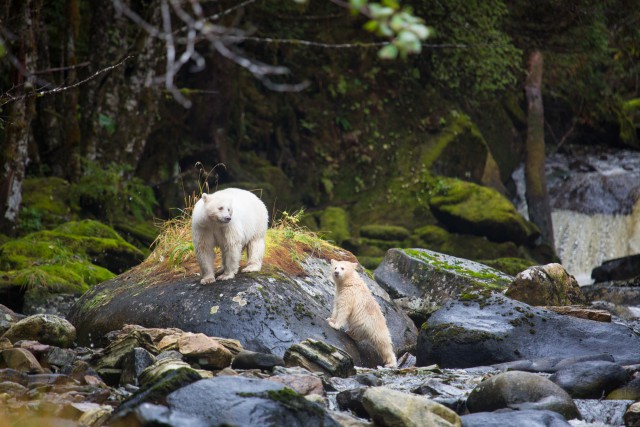
Spirit bears in the Great Bear Rainforest / Photo by Cael Cook courtesy Spirit Bear Lodge
When the royals eventually return to Canada, First Nations-owned Spirit Bear Lodge spokesperson Bill Sirota hopes they re-visit the Great Bear Rainforest and experience the ancestral lands of the Kitasoo Xai’xais First Nation.
“We extend a warm invitation to Will and Kate and their children to come and experience the natural beauty of this area and the wonderful people who live here,” Sirota says.
“I’m told that the magic of this place—to be able to intimately experience the majesty of wildlife, including grizzlies and spirit bears—is life-changing.”
Mike Willie—the force behind Vancouver Island-based Sea Wolf Adventures and a member of the Musgamakw Dzawada’enuxw First Nation—says his European guests tell him they’ve come to Canada because “they don’t have this kind of wilderness any more. It’s sad. The pull to be close to nature is in all of us.”
Willie’s operation includes a cultural component, as well as a chance to view dolphins, orcas, humpbacks and bears in the wild.
“If you look at a totem pole, you’ll see that wildlife is the foundation of our culture which, in my ancestral lands, goes back 13,000 years,” he says.
“Right now, I’m having a really cool relationship with grizzly bears in the area,” continues Willie—who fundamentally, like a majority of First Nations people in British Columbia, opposes trophy hunting.
“It’s so awesome to see these bears, especially when they trust you and they come out with their cubs around you. The mother grizzly I’m thinking of? Given where she hangs out, her grandparents probably knew my grandparents.”
